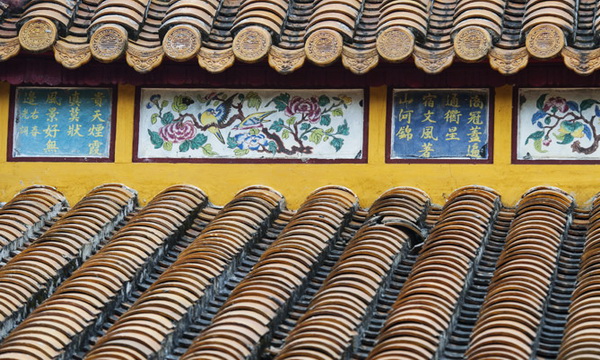Poetry and literature on the architecture of the Hue Imperial Palace represent a harmonious blend of architectural art and literature, reflecting the philosophy and way of life of the Nguyen dynasty. The poems, couplets, and inscriptions carved on the palace, tombs, and other monumental structures in Hue are not only aesthetically valuable but also rich in religious and political significance.
1.Origin and History:
The architectural works of the Hue Imperial Palace were constructed starting from the reign of Emperor Gia Long and were further developed under subsequent dynasties, particularly during the reign of Emperor Minh Mang. These literary works were engraved on walls, columns, horizontal plaques, stone steles, tiles, and bricks. They reflect the ideological, historical, and religious values of the time.
2.Content and Themes:
The poetry on these structures mainly discusses ethical values, glorifies the royal family, and praises emperors, empresses, and officials. The poems were typically written in the Confucian style, emphasizing filial piety, humaneness, and moral virtues, as well as the perpetuation of the Nguyen dynasty.
The couplets also demonstrate the deep connection between Confucianism, Buddhism, and national cultural values.
3.Philosophy of Life:
The poems and couplets often carry moral teachings, reflecting the philosophical ideas of the feudal period, such as respect for the emperor, loyalty, and reverence for ancestors. Especially, the poems engraved on the tombs of Nguyen emperors express wishes for longevity and prosperity for the dynasty.
4.Cultural and Historical Value:
The poetry and literature on the architecture of the Hue Imperial Palace hold great significance in preserving the culture and history of the Nguyen dynasty. They serve as essential resources for historians, literary scholars, and cultural researchers. Additionally, these works are masterpieces of art, showcasing the intricate craftsmanship of the artisans of the time.
5.Notable Examples:
Some of the most prominent examples of poetry and literature are found on the horizontal plaques in the Imperial City, the couplets at the tombs of Gia Long and Minh Mang, the stone steles in the royal tombs, and the engravings on the tiles and roofs of the Imperial Palace. These couplets and plaques often convey the solemn and majestic nature of the Nguyen dynasty and praise the virtues of the emperors.
6.Preservation and Heritage Value:
These architectural works and literary texts are still well-preserved at the Hue Heritage site, which was recognized as a UNESCO World Heritage Site in 1993. The preservation of these monuments not only helps maintain the cultural values of the Nguyen dynasty but also affirms the unique significance of poetry and literature in the architecture of the Hue Imperial Palace.



